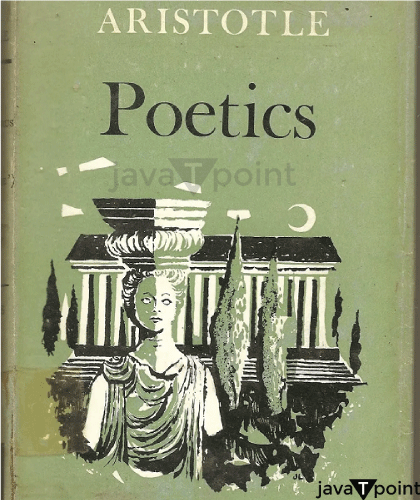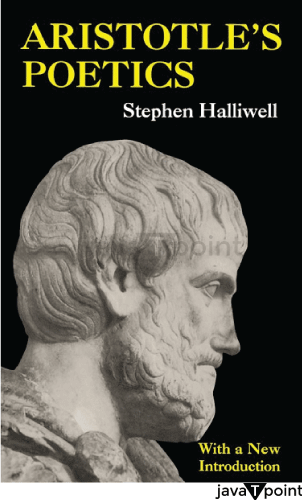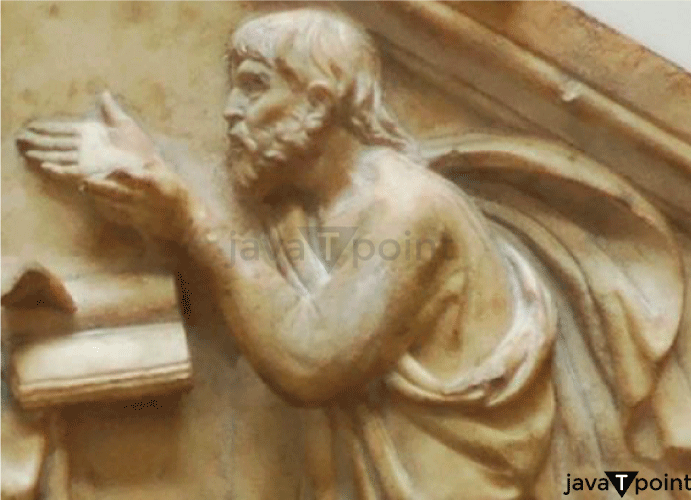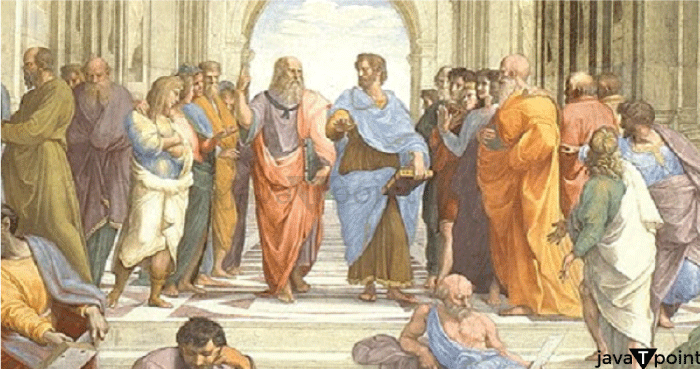A Summary and Analysis of Aristotle's PoeticsAristotle, a Greek philosopher who lived in the 4th century BCE, wrote Aristotle's Poetics, a significant literary theory and criticism work. It is regarded as one of the key works in studying drama, aesthetics, and literature. Aristotle's Poetics is primarily intended to thoroughly examine and explain the nature of poetry, particularly tragedy, and lay out the essential components and guiding ideas that characterize a successful work of art. 
Aristotle studied poetry from a philosophical perspective, attempting to delve into the fundamental ideas that underlie the production and appreciation of creative works. He sought to identify the crucial elements and traits that enhance the potency and effect of poetry on its audience. Aristotle attempted to offer a systematic framework for assessing and appreciating works of art by considering several aspects of poetry, including plot, character, thought, language, and spectacle. Aristotle's Poetics provides a practical manual for poets and playwrights in addition to his analytical method. He offers advice on how to write a gripping story, create interesting characters, and arouse particular feelings in the audience. Aristotle offers lessons aspiring artists might use in their creative endeavors by outlining the essential components that make tragic theatre successful. In addition to offering a theoretical framework for comprehending literature, Aristotle's Poetics also sets the foundation for the later development of literary theory and criticism. Our knowledge and interpretation of art and its effects on the human experience are shaped by its ideas and notions, significantly impacting Western aesthetics. The introduction to Aristotle's Poetics prepares the reader to thoroughly investigate poetry's fundamentals, components, and goals, especially tragedy and provides insightful information on the narrative craft and its pervasive importance. The Definition of Poetry by AristotleAs presented in his Poetics, the idea of mimesis is the foundation for Aristotle's notion of poetry. Mimesis is the term for the artistic imitation or portrayal of reality. In Aristotle's opinion, poetry is a type of mimesis that conveys the essence of the human condition and the environment in which we live. 
According to Aristotle, poetry is a creative endeavor transforming reality into art. He maintained that poetry is a selected and heightened portrayal of reality rather than simply duplicating the outside world. Poets construct a creative and orderly world that reflects and enlightens the intricacies of human experience via language, imagery, and narrative. Aristotle distinguished poetry from other genres of art, such as philosophy or history, by highlighting its capacity to stir feelings and stimulate the listener's imagination. He argued that poetry has a special ability to encapsulate the universal characteristics of human nature, bringing insights into the human situation and allowing the poet and the audience to experience emotional catharsis. Aristotle also acknowledged the diversity of poetic forms, which include epic, tragedy, comedy, and lyric poetry. Every genre has unique traits and goals of its own. For instance, while comedy strives to amuse and create laughter through amusing circumstances and characters, tragedy seeks to evoke sorrow and dread by portraying noble characters and their collapse. Aristotle's concept of poetry emphasizes its function as an innovative and transformational art form that elevates and illuminates reality while imitating it. Aristotle offers a fundamental concept of poetry as a form of expression, introspection, and emotional engagement by highlighting the importance of mimesis. The Origins and Components of TragedyAristotle thoroughly examines the nature and components of tragedy in his Poetics, who regarded it as one of the most important genres of poetry. Aristotle claimed that tragedy is a form of literature that stirs up feelings of terror and sympathy, resulting in a cathartic experience for the audience. The main ideas that Aristotle clarified about the nature and components of tragedy are as follows: Tragic HeroAristotle highlights the tragic hero's crucial position in a tragedy. The tragic hero is a persona of noble stature that has some endearing traits as well as a tragic flaw, or hamartia. This fault ultimately results in the hero's demise, inspiring sympathy and horror in the viewer. HamartiaA crucial component of tragedy is the grievous fault, also known as hamartia. A personality quirk or bad decision brings about the tragic fall of the protagonist. The defect is frequently the result of the hero's overwhelming pride or hubris, which brings about unavoidable sorrow. CatharsisAristotle presents the idea of catharsis, which is the letting go or cleansing of emotions that an audience experiences while engaging in a tragedy. Audience members can experience pity, terror, and other negative feelings through the hero's demise and then release and resolve them through vicariously experiencing them. This results in a sense of emotional catharsis. Plot StructureAristotle emphasizes the importance of strong plot development in a tragedy. The idea of a coherent, comprehensive plot with a beginning, middle, and end is one he introduces. A logical and unavoidable conclusion should follow a sequence of events causally connected in the plot. 
Reversal and RecognitionAristotle analyses two crucial plot points: Reversal (peripeteia) and Recognition (anagnorisis). Reversal is the sudden change in the protagonist's fortunes, frequently from good to bad. Recognition is the epiphany or epiphanic moment when the protagonist realizes or discovers their true situation. CharacterizationAristotle places a strong emphasis on the importance of character in tragedy. The characters should accurately represent the human condition, be true to life, and be consistent in their behaviours and motivations. Instead of being the product of purely uncontrollable external circumstances, the tragic hero's sorrow should originate from their character and decisions. Thought and ThemeAccording to Aristotle, tragedies should examine important concepts and themes. Inquiry into ethical, moral, and philosophical issues of human existence should be sparked by it. Language and SpectacleAristotle admits the significance of language and spectacle in tragedies but places them second to narrative and character. While spectacle should improve the overall theatrical experience without obscuring the fundamental components of tragedy, language should be suitable to the characters and reflect the emotional intensity of the events. By clarifying these components, Aristotle offers a framework for comprehending the nature of tragedy, its function, and the characteristics required for its successful development. For centuries to come, playwrights and critics will be influenced by his insights into the theory and practice of dramatic literature. 
The Composition of TragedyThe structure of tragedy is examined in Aristotle's Poetics, which emphasizes the significance of a skillfully constructed and compelling framework for good dramatic work. The order of the narrative, the flow of events, and the cohesiveness of the entire work are just a few of the fundamental components and ideas that Aristotle outlines as contributing to the structure of tragedy. The main components of Aristotle's analysis of the structure of tragedy are as follows: Storyline UnityIn a tragedy, Aristotle emphasizes the value of a cohesive storyline. He contends that a well-written plot should be logically connected and have a beginning, middle, and end. Each incident should flow organically from the one before it in the plot, with a clear and logical structure. CompletenessAccording to Aristotle, a tragedy should convey a sense of fullness or completion. This means that the entire plot's necessary aspects and components must be present, and the conclusion must be pleasing. Loose ends or unresolved subplots can hamper the cohesion of the tragedy as a whole. Plot ComplexityAccording to Aristotle, a good tragedy should have a complicated plot. It should contain actions that grab the audience's interest and maintain their emotional investment. To keep the audience interested, the plot should have aspects of surprise, turn-of-the-luck, and moments of Recognition or discovery. Casual ChainA cause-and-effect relationship between each event and those that came before it should naturally develop. The impression of logic and coherence within the graphic is maintained thanks to this causal connection. Tragic ClimaxAccording to Aristotle, the tragic climax is the scene in a story where the tension and emotional intensity peak. It's when the tragic hero's fates turn for the worse, and their impending demise becomes clear. Episodes and SubplotsAristotle recognizes the existence of episodes and subplots inside a tragedy. These supporting stories should be thoughtfully woven into the primary storyline to strengthen its coherence and cohesiveness. Rather than simply digressions, they should deepen our knowledge of the main ideas and people. Structure and LengthAccording to Aristotle, a tragedy's optimum runtime should allow for a full and powerful experience without becoming overly drawn out. He suggests a length that can be successfully delivered in a single sitting to keep the audience interested throughout the performance. Aristotle gives a framework for creating a well-structured and effective tragedy by highlighting these structural components. A tightly wound plot with logical progression, unification of action, and a satisfying resolution aids in making the audience experience interesting and emotionally resonant. Plot and Development of PlotAccording to Aristotle's Poetics, the plot plays a major part in tragedies. The work's success depends on the storyline, which Aristotle regarded as the most important component of a tragedy. The main elements of plot and plot development, as described by Aristotle, are as follows: Unity of PlotAristotle underlines the significance of the plot's cohesiveness. He contends that a strong plot should have unity of action, which means that all of the incidents should be related to one another and advance the main story. A cohesive and coherent whole should be formed through the causal connections between each occurrence. Plot StructureThe idea of plot structure, which comprises a beginning, middle, and end, is first introduced by Aristotle. The plot is launched, and the opening establishes the first circumstances. The growth and evolution of events that result in a climax or turning point happen in the middle. The plot is resolved and brought to a close at the end. Causal ChainAristotle stresses the importance of a cause-and-effect connection between the plot's actions. He contends that every occurrence should logically follow the ones before it, forming a connected and cohesive series. Events should follow a causal chain that advances the plot and be caused by decisions made by characters, situations, or outside forces. Reversal and RecognitionReversal (peripeteia) and Recognition (anagnorisis) are two crucial points in developing a narrative that Aristotle examines. An abrupt change in the protagonist's fortunes or circumstances?often from good to negative or vice versa?is a reversal. The protagonist experiences a moment of insight into their genuine circumstances or identity, referred to as Recognition. These turning points and epiphanies aid the development and evolution of the plot. Complexity and SurpriseAccording to Aristotle, a well-written story should have aspects of complexity and surprise to pique readers' interest and keep them watching. The plot should have unexpected turns, twists, and disclosures to keep the audience's attention and curiosity. These unexpected events should flow logically from the causal relationship and add to the plot's coherence. ClimaxAristotle defined the climax as the plot's focal point of greatest emotional intensity and tension. The turning point in the protagonist's story determines their eventual fate. A pivotal decision or revelation profoundly affecting the plot's resolution occurs in the climax. ResolutionAristotle contends that a tragedy must come to a satisfying conclusion to leave the audience with a sense of closure. The conclusion should cover loose ends, address issues, and give the audience a sense of catharsis. It should provide analysis or takeaways from the awful situations portrayed. Aristotle emphasizes the value of a well-organized and compelling narrative in tragedies by emphasizing these plot and plot development elements. The tragedy's overall efficacy and power are boosted by a neatly woven plot with unity of action, a causal chain of events, surprises, and a climactic resolution. Characterization in TragedyTragedy's three main characters are ethos, pathos, and catharsis. Aristotle's Poetics examines the importance of characterization in tragedy, which acknowledges its critical function in generating audience participation and catharsis. Aristotle stresses the significance of character portrayal and development to arouse empathy, emotional engagement, and a sense of catharsis. According to Aristotle, the following are the main elements of characterization in tragedy: EthosEthos refers to the moral and ethical characteristics of the characters, and Aristotle highlights the significance of this concept. He contends that tragic characters should have certain endearing qualities that help viewers identify with and sympathize with them. The characters' struggles, conflicts, and moral quandaries should relate to the audience, fostering an emotional bond. PathosPathos, which refers to the emotions and feelings evoked in the audience via the portrayal of characters' pleasures, pains, sufferings, and tragedies, is a concept that Aristotle acknowledged. The audience feels the characters' anguish, sadness, love, and loss, making it easier to connect with them and experience the characters' emotional journey. Tragic HeroAristotle emphasizes the value of the tragic hero, a protagonist who falls from grace because of their tragic fault (hamartia). The viewer can identify with the tragic hero's noble characteristics. The audience sees the difficulties, emotional tensions, and sad end of the hero, instilling feelings of pity and terror. Consistency and RealismAristotle emphasizes the importance of consistency and authenticity in character portrayal. Characters should be realistic, displaying features and actions consistent with their defined ethos. Internal consistency in their motivations and behaviors will help the viewer to comprehend and relate to their decisions and circumstances.
Next Topica photograph summary
|
 For Videos Join Our Youtube Channel: Join Now
For Videos Join Our Youtube Channel: Join Now
Feedback
- Send your Feedback to [email protected]
Help Others, Please Share









